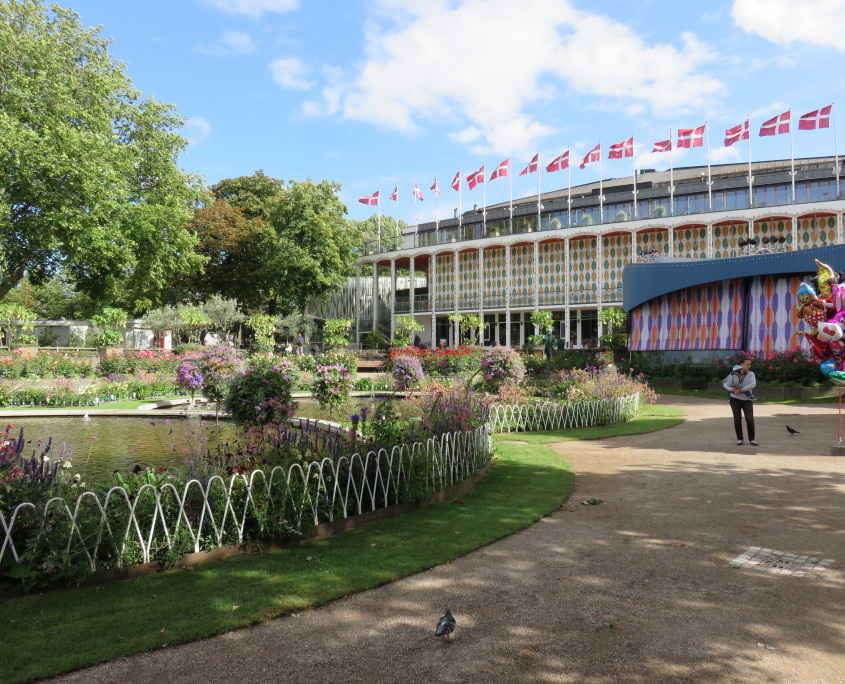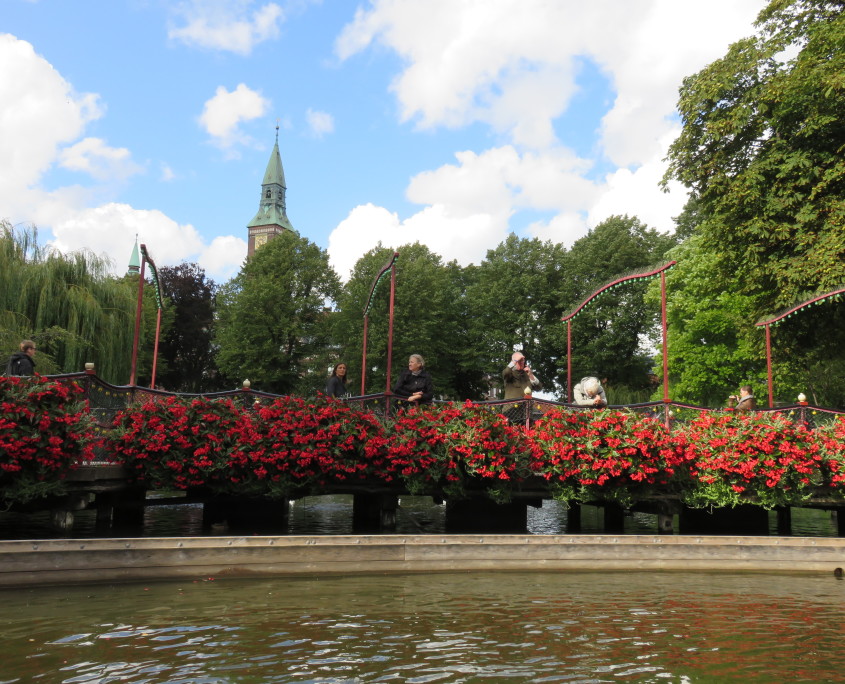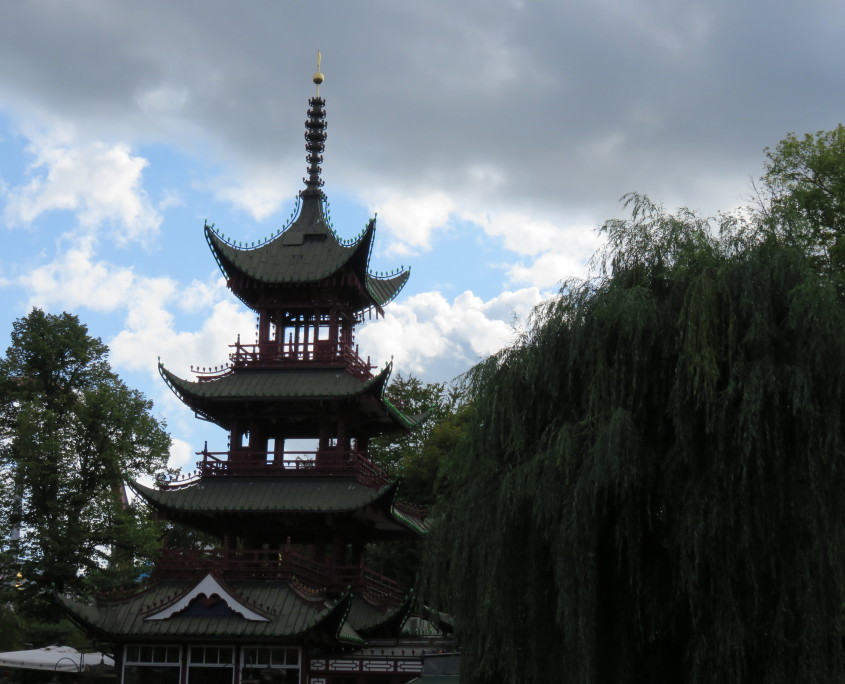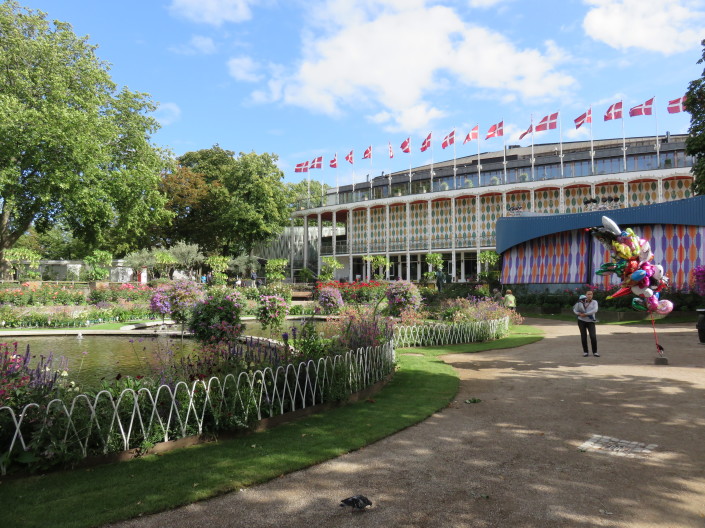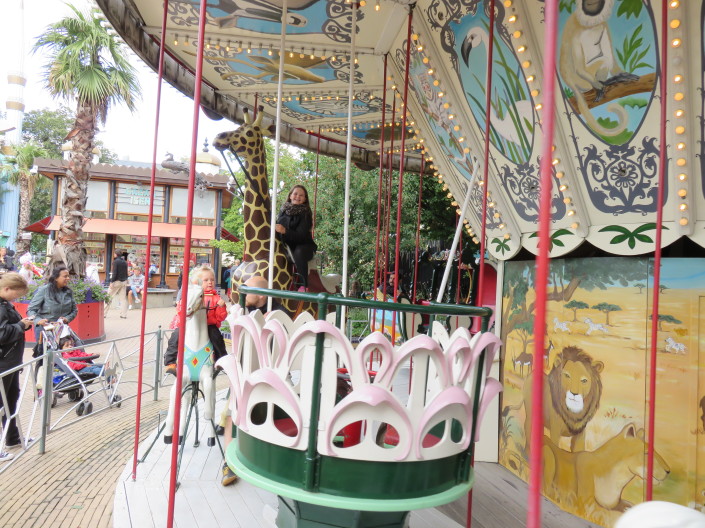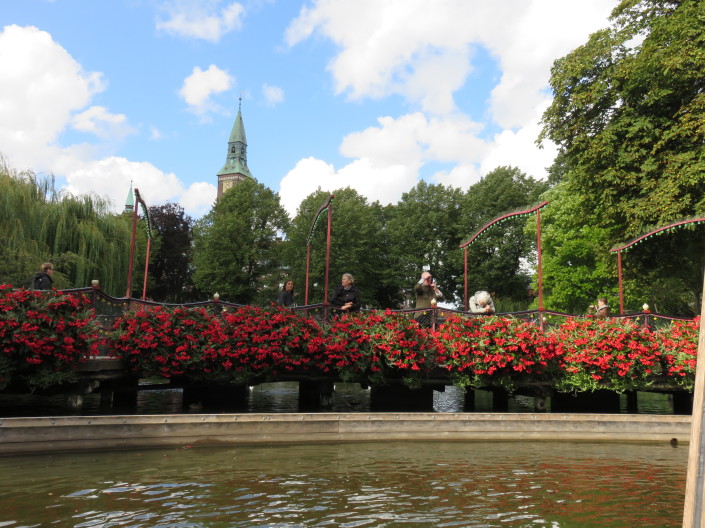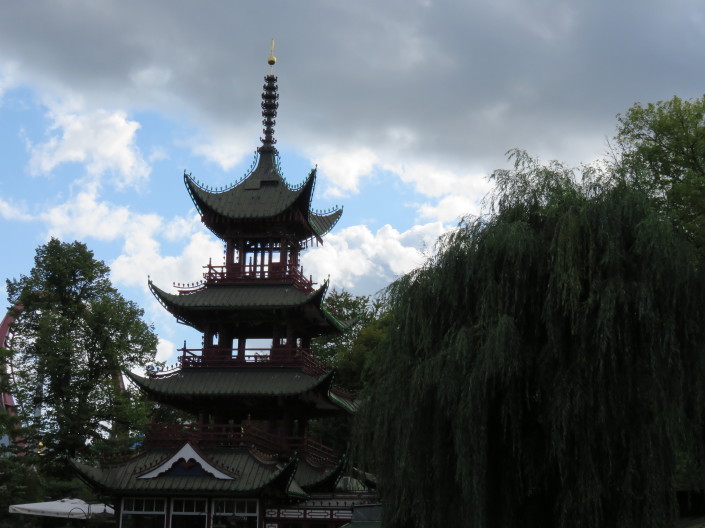Tivoli – Tivoli Gardens
Tivoli Gardens (or simply Tivoli) is a famous amusement park and pleasure garden in Copenhagen, Denmark. The park opened on 15 August 1843 and is the second oldest amusement park in the world, after Dyrehavsbakken in nearby Klampenborg.
With 4.033 million visitors in 2012 Tivoli is the second most popular seasonal theme park in the world, the most visited theme park in Scandinavia, and the fourth most visited in Europe, only behind Disneyland Paris, Europa-Park Rust, and the Efteling.
Tivoli’s founder, Georg Carstensen (b. 1812 – d. 1857), obtained a five-year charter to create Tivoli by telling King Christian VIII that “when the people are amusing themselves, they do not think about politics”. The monarch granted Carstensen use of roughly 15 acres (61,000 m²) for an annual rent.
From the very start, Tivoli included a variety of attractions: buildings in the exotic style of an imaginary Orient: a theatre, bandstands, restaurants and cafés, flower gardens, and mechanical amusement rides such as a merry-go-round and a primitive scenic railway.
After dark, colored lamps illuminated the gardens. On certain evenings, specially designed fireworks could be seen reflected in Tivoli’s lake.
Composer Hans Christian Lumbye (b. 1810 – d. 1874) was Tivoli’s musical director from 1843 to 1872. Lumbye was inspired by Viennese waltz composers like the Strauss family and became known as the “Strauss of the North.”
Many of his compositions are specifically inspired by the gardens, including “Salute to the Ticket Holders of Tivoli”, “Carnival Joys” and “A Festive Night at Tivoli”. The Tivoli Symphony Orchestra (Copenhagen Philharmonic) still performs many of his works in the Concert Hall.
In 1874, Chinese style Pantomimeteatret (The Pantomime Theatre) took the place of an older smaller theatre. The audience stands in the open, the stage being inside the building. The theatre’s “curtain” is a mechanical peacock’s tail. From the very beginning, the theatre was the home of Italian pantomimes, introduced in Denmark by the Italian Giuseppe Casorti.
This tradition, which is dependent on the Italian Commedia dell’Arte has been kept alive, including the characters Cassander (the old father), Columbine (his beautiful daughter), Harlequin (her lover), and, especially popular with the youngest spectators, the stupid servant Pierrot. The absence of spoken dialogue is an advantage, as Tivoli is now an international tourist attraction.
Tivoli is always evolving without abandoning its original charm or traditions. As Georg Carstensen said in 1844, “Tivoli will never, so to speak, be finished,” a sentiment echoed just over a century later when Walt Disney said of his own Tivoli-inspired theme park, “Disneyland will never be completed.
It will continue to grow as long as there is imagination left in the world.” Walt Disney during a trip overseas with his wife Lilly visited Tivoli Gardens. Walt was so impressed with the Danish amusement park, he immediately decided Disneyland should try to emulate its “happy and unbuttoned air of relaxed fun.”
The world´s most popular city park appeals equally to the local population as it does to visitors to the city. Tivoli Gardens is more than an amusement park, it is equally as popular as a place to go dining and people-watching.
The 21-acre park is beautifully landscaped with fountains and flower beds. The park prides itself in the more than 111,000 custom-designed lights that illuminate it at night and the more than 400,000 colorful flowers, including 65,000 tulips.
The architecture of the buildings in the park is wonderful. Behold the stately Nimb Palace Hotel with its Moorish-style facade sporting magnificent towers and minarets.
The Chinese Tower was built in 1900 and looks magical at night with the light reflecting off the central lake where the 18th-century frigate St George III beckons attention. Other notable structures in the park include the Glass Hall Theater, the Concert Hall, the Pantomime Theater, and Plænen.
The park is best known for its wooden roller coaster, Rutschebanen, or as some people call it, Bjergbanen (the Mountain Coaster), built in 1914. It is one of the world’s oldest wooden roller coasters that is still operating today. An operator controls the ride by braking down the hills so it won’t gain too much speed.
The world’s tallest carousel, The Star Flyer, opened in Tivoli in 2006. Eighty meters high and built by the Austrian company Funtime, it offers panoramic views of the city.
Tivoli Festival – takes place from 14 May to 8 September and features more than 50 different events that include opera shows, symphony concerts, chamber music, pop, and rock artists, and much more. On Fridays at 10 pm, there is a weekly rock concert under the banner Friday Rock.
There is a Halloween Feast in October and Christmas Holidays in December. During the summer the park has fireworks shows.
The Tivoli Boys Guard is a music ensemble of boys aged 8–16 dressed in uniforms reminiscent of those of the Royal Danish Guard complete with bearskins. It was founded in 1844 and gives concerts, makes parades, stands guard at the garden’s buildings and monuments on special occasions, and represents the gardens at various events.

